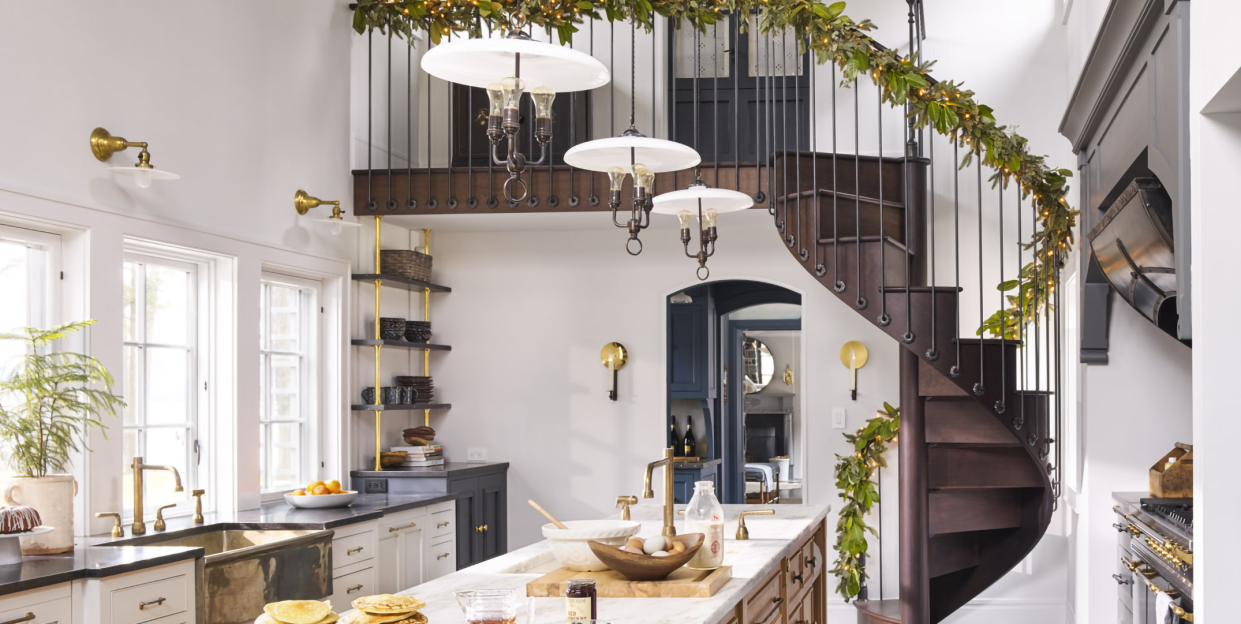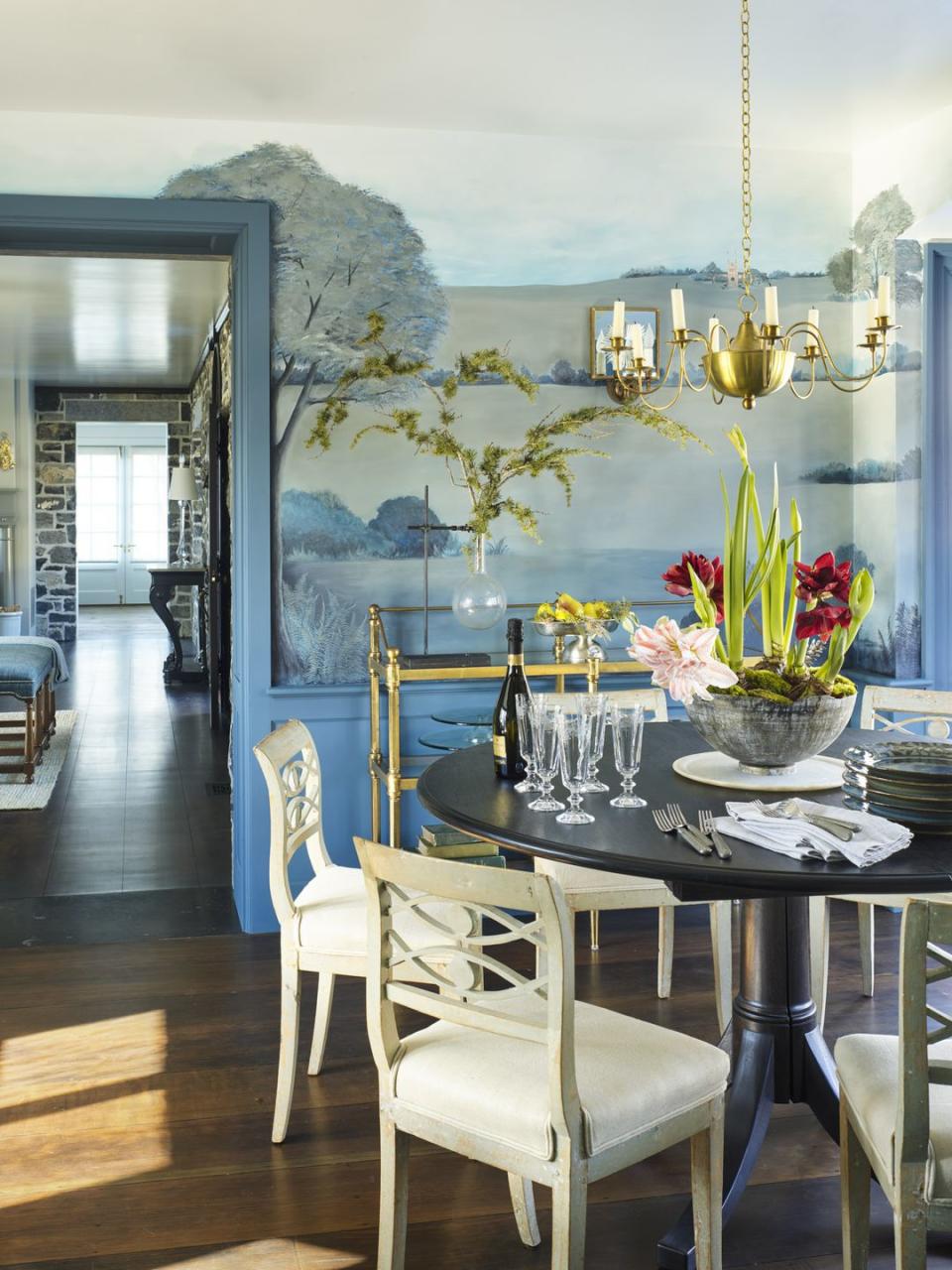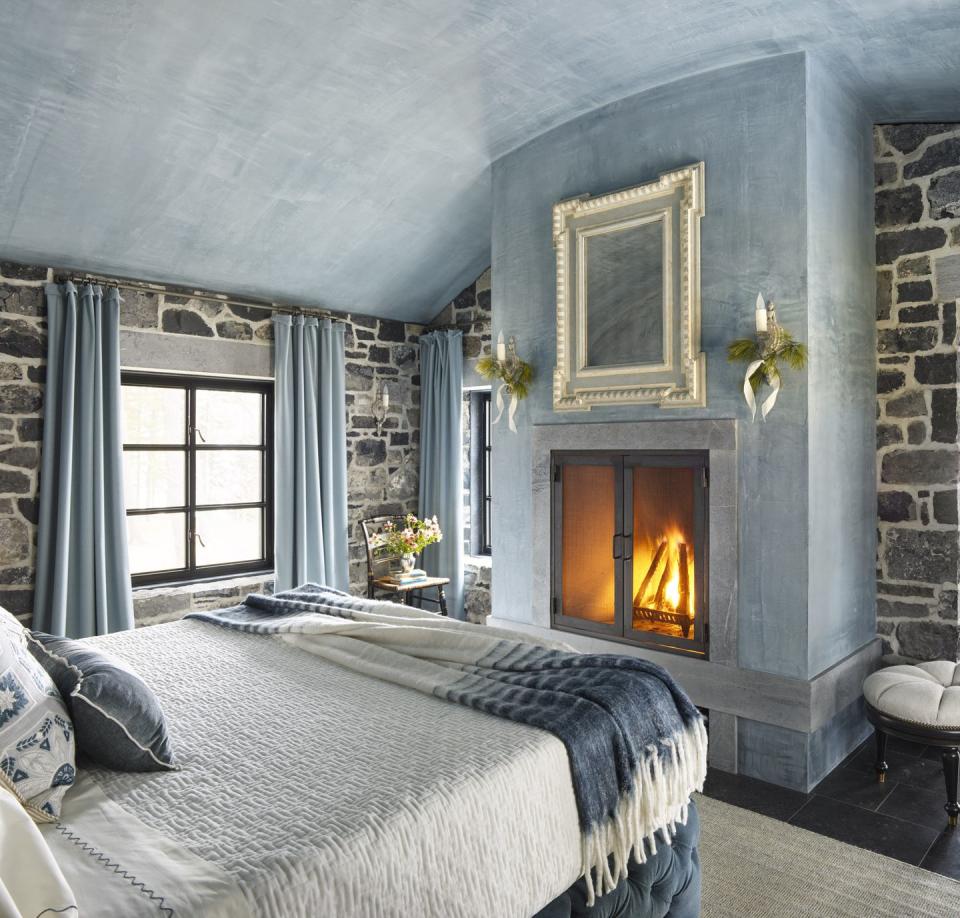Hate Overhead Lighting? This Cozy Vermont Retreat Uses Absolutely None And Is Somehow Still Bright and Inviting

A forested parcel on the banks of Lake Champlain in Panton, Vermont, captivated a Texas couple, who hired Houston designer Cathy Chapman and Burlington, Vermont–based architecture firm TruexCullins to transform the original 1927 farmhouse on the site. Cathy talked to House Beautiful about how she brought the outside inside, bringing light into a dark old house and how she created cozy spaces that don't feel confined.
Snow-covered Vermont is a long way from balmy Houston, where you and the clients are based. How does a Texan get into a New England state of mind?
A lot of the design inspiration came from the landscape. The property-a 125-acre wooded peninsula jutting into Lake Champlain-really spoke to the clients. The wife fell in love with it while she was visiting her daughter at college in Vermont.
Was the palette influenced by this northern landscape?
Yes! The interior colors came directly from what she saw out the windows-the soft, chalky blue-grays of the lake and the distant Adirondacks; the skies with those pinks, purples, and golds. She wanted the interior colors to harmonize with the view.
How about the materials? They, too, seem to bring the outdoors in.
They do. The house was pretty much taken down to the studs, and everything is local. For example, the stone used for the living room walls comes from a quarry a couple of miles away. Trees that had to be cleared on the property were milled and made into paneling for new walls. We also reused materials from the original house: old wooden floorboards became ceilings, and sinks and tubs were refurbished and given new life.
I’m guessing that the excellent craftsmanship was also sourced locally?
Absolutely. It mattered a lot to these clients to support local artists and artisans: The builder, the stone masons, and the woodworkers are all based nearby, and they were among the best I’ve ever worked with. Many of the furnishings, also, were custom made in Vermont.
When it came to furnishing the rooms, you eschewed the quilt-and-butter-churn aesthetic that can often prevail in this region.
The wife loves beautiful old things, and she did want a farmhouse feel. We went shopping together in antiques stores whenever we were in Vermont. But we also aimed for a mix-nothing too stagey or contrived. We looked for well-proportioned, sculptural pieces and introduced a few modern furnishings, such as the sling chair in the living room.
The rooms are snug but still feel open, in part because of your restraint.
Unlike a modern home with giant spaces, this house has a lot of cozy rooms, and I was mindful of that. For instance, the dining room is petite, so I sourced chairs that are small, yet sturdy and comfortable. The table was custom built. It’s round but expands to an oval. The two chandeliers above it slide on a rod so they can stay centered when the table is opened up.

What are some other tricks for keeping “cozy” from feeling “confined”?
Throughout the house, we kept fabrics really clean and simple, so as not to compete with the rich textures of the building envelope-walls, floors, ceilings-or with the views. The curtains are all mounted above and outside the window openings to maximize openness and light. And window seats let you snuggle up close to the landscape. I also brought in a lot of shimmer-mirrors in nearly every room, and brass accents. And because the ceilings are low, we painted some of them in high gloss to encourage the play of light.
Speaking of light, old houses can be fairly dark. How did you go about illuminating these spaces?
There isn’t a single recessed light in the entire house. It’s all chandeliers, sconces, and lamps, a mixture of antique and new. We spent a lot of time selecting them, and then arranging them to provide just enough brightness. The result is that the light in the house is very pretty; there isn’t a harsh glare anywhere.

This project took four years. You must have gotten to know Vermont well during that time.
Actually, no. I only went up there five or six times total. We did most of the planning here in Houston, choosing colors, cabinetry, and lighting during marathon design sessions. Then we shipped it all up on our moving trucks and did one huge installation.
So you are the one thing that wasn’t sourced locally?
The client and I had worked together in the past, and we had so much fun. When you feel that sense of connection and trust, it can travel with you anywhere.
Follow House Beautiful on Instagram.
('You Might Also Like',)

